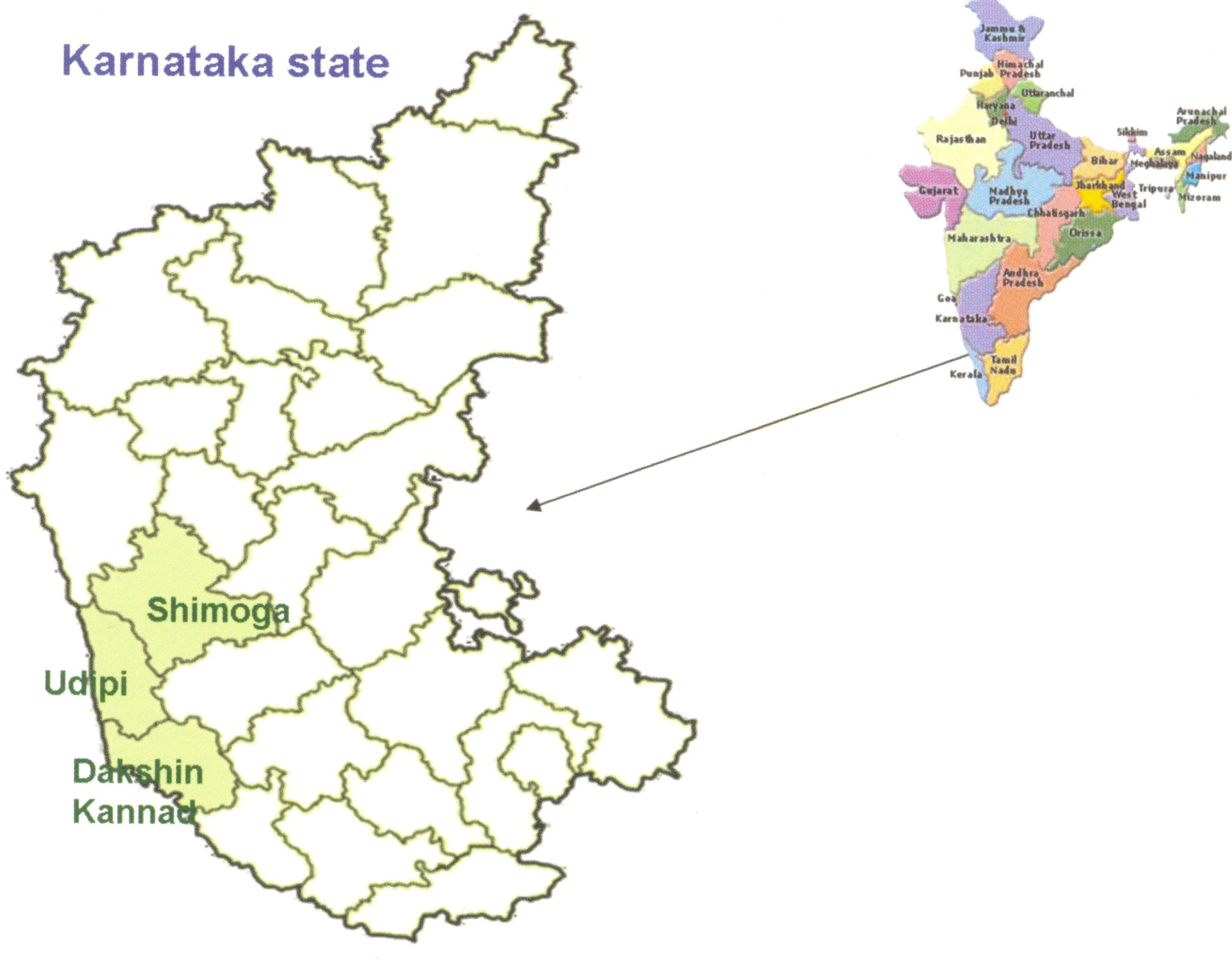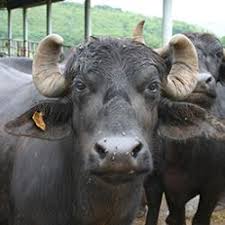South Kanara

owards east, the Western Ghats gradually fade into semi-malnad and plain lands of Shimoga districts. However, the presence of buffaloes in its original habitant has decreased substantially while more such animals are found in the adjoining Shimoga districts (Kanthivaran et al., 2008)(Figure 1).
According to 17th Livestock census (2003), the cattle and buffalo population of Karnataka state is 9.54 and 3.99 million respectively. The state has 5.15% and 4.08% of total cattle and buffalo population of the country respectively. The trend of buffalo population from 1972 to 1997 in the state showed an increase of 33.64% while it declined by 11.91% in the corresponding period (1997 to 2003) with higher reduction in indigenous animals (16.8%). In the districts of Dakshin Kanara, Udupi and Shimoga which comprise the breeding tract of South Kanara buffaloes, the total buffalo population is 2, 69,253. This consists of buffaloes of South Kanara, graded Murrah, Surti and non- graded types. Murrah/surti graded buffaloes constitute 3.5% of the total buffalo population in the breeding tract.
Some of the important characteristics is described as follows: –
| Body color | The coat colour varies from brown to silver grey and black. | |
| Horns | Horns are flat, corrugated and curved projecting backward, sideward and upward at the neck region. | |
| Marking | – | |
| Eye | – | |
| Tail | Tail is fairly long,thin and flexible ending in a black switch. | |
| Body | South kanara buffaloes are well built and medium sized animals. | |
| Head | Head is fairly long with broad forehead. | |
| Face | – | |
| Neck | Neck is long with moderately thick dewlap. | |
| Ear | Ears are moderately long and erect. | |
| Limbs | – | |
| Skin | Skin is black. | |
| Udder | Udder is moderately developed | |
| Teats | Teats are medium sized and squarely placed behind the hind legs |
Morphological Characteristics
Various values of morphological traits of South Kanara buffaloes like body length, height at withers, heart girth , Pauch girth, face length, horn length , ear length and Tail length are given in the following table.
| Characteristics | Male(12) | Female(51) |
| Body Length(cm) | 124.50±2.50 | 112.81±3.26 |
| Height at withers(cm) | 119.00±1.00 | 113.13±2.88 |
| Hearth Girth(cm) | 169.50±0.50 | 154.23±2.94 |
| Pauch Girth(cm) | 170.00±2.00 | 165.23±3.18 |
| Face Length(cm) | 44.50±1.50 | 42.50±0.72 |
| Horn Length(cm) | 51.00±5.00 | 42.13±2.22 |
| Ear Length(cm) | 20.50±1.50 | 20.98±0.56 |
| Tail Length(cm) | 92.00±2.00 | 72.45±1.79 |
Housing
Animals are housed close to the human dwellings. In most cases, closed housing is provided (81.8 %). In most instances (62.5), the animals and humans are housed in different parts of the same building, with separate structures in the remaining cases. Most of the constructions are permanent (63.6%) with thatched roofs covered with paddy straw or tiled roofs (figure 3.). Floors are generally uneven without proper drainage facilities. In peri-urban areas, the animals are overcrowed with less than the minimum required floor space of 3.5 square meters (ICAR, 2002) being provided (Fig.4). In rural areas, the practices of allowing the animals to wallow in the nearby water sources is prevalent(66.7%). Mostly the animals wallow around noon after grazing in the fields under a hot sun(fig 15).
Feeding
South kanara buffaloes areallowed for grazing during day time in fallow lands and sometimes in nearby forest region,especially in rural areas of Shimoga districts close to the western ghats(fig 5). Paddy sraw,dry mixed grasses and green grasses are the main source of roughage (fig. 6). Wheat bran, cotton seed cake, groundnut cake and rice bran are given as concentrates. About half (45.5%) of the farmers provide concentrates to the milking animals; 0.5 to 2 kg of concentrate per day is usually given to the lactating animals at the time of milking animals; 0.5 to 2 kg of concentrate per day is usually given to the lactating animals at the time of milking. Some farmers even feed the animals with kitchen waste and hotel wastes; this practice is more prevalent in the urban areas.
Breeding
Breeding of buffaloes is highly unorganized in the breeding tract. Natural service is commonly practiced with only 9.9 % of the farmers in the urban and peri-urban areas following artificial insemination. In the rural areas A.I. is completely absent and even the availability of breeding bulls is not adequate with not more than 2 to 3 bulls per village. In urban areas too, semen of south kanara buffaloes are not available and the farmers have to opt for either murrah or surti semen for A.I . As a result, the proportion of graded South Kanara buffaloes and non- descript animals are more common in these areas.

